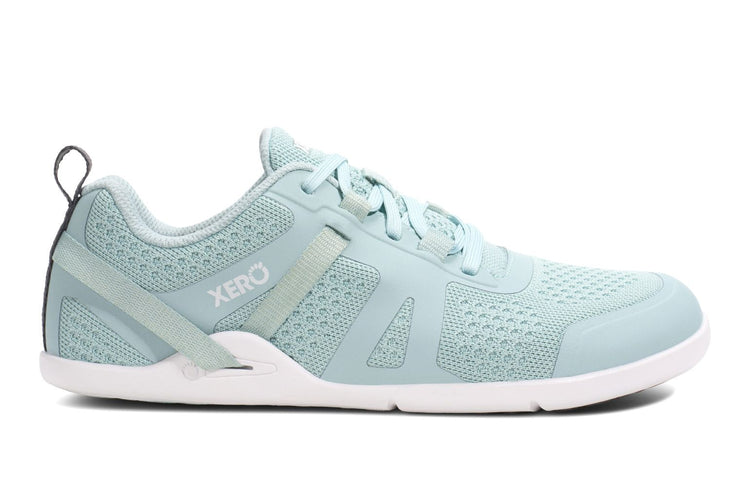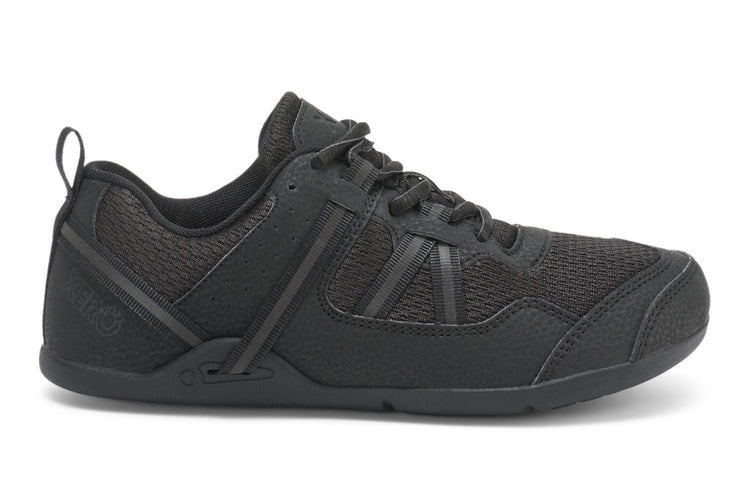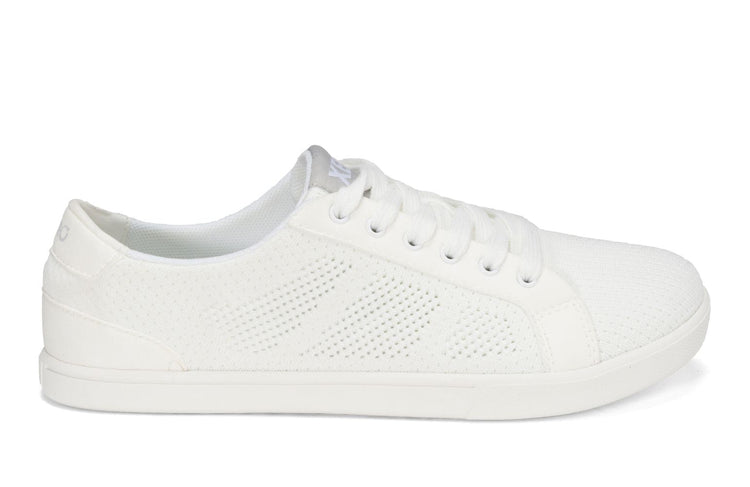latest News
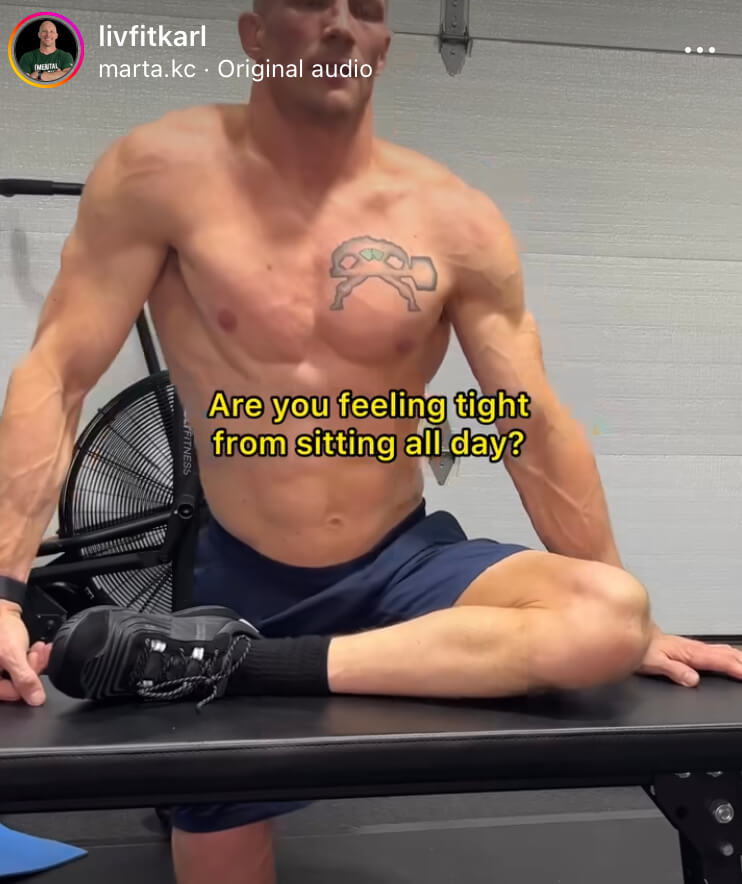
Get Fit and Healthy in 2023 with LivFitKarl's Expert Tips on Natural Movement and Minimalist Footwear
Make your new year's fitness routine even easier with the help of Instagram influencer LivFitKarl, a partner of Xero Shoes. With a focus on natural movement and minimalist footwear, Karl has some great insights on everything from preventing tightness from sitting all day to improving mobility and strength. And as a big fan of Xero Shoes (see here), Karl knows how to walk the walk (literally!) when it comes to staying fit and active. Follow LivFitKarl for some amazing advice on how to live your best, fittest life.
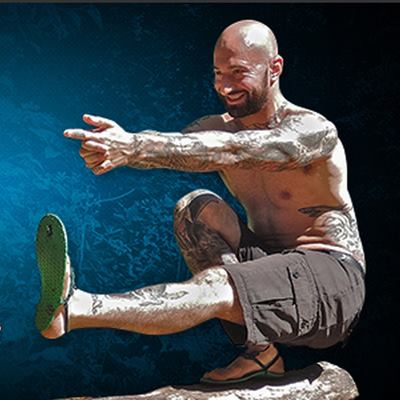
Five Calisthenics Leg Exercises for Building Strength and Muscle by Xero Hero Al Kavadlo
Updated 7/22/22 For most sports, leg strength can give you, well, a leg up on the competition. Even if you're not an athlete, though, leg strength is important for health and wellness. If you like to exercise but you aren't a gym person, you might think that running, cycling or hiking are your only options for a decent leg workout. But there is so much more you can do to strengthen your lower body without lifting weights or using machines. Here are 5 of my favorite equipment-free leg exercises for developing strong legs and glute muscles. (Wondering what calisthenic leg workouts are all about? See my note at the end of this post.) Ready to develop strong legs? Let's go! 1. Bodyweight Squat This is the most fundamental strength building exercise for the legs. This classic leg squat hits all the muscles of your lower body and may be a mobility challenge for some folks as well. To perform a bodyweight squat, start with your feet hip distance apart, then reach your arms forward, bend your knees and sit back into your heels. When your hips get below knee height, return to a standing position and repeat. Working your way up to 40-50 consecutive bodyweight squats will set you up with a fantastic foundation to progress your lower body strength training. 2. Walking Lunge The walking lunge requires a bit more body awareness than the standard squat. It also introduces a balance component and is a great way to hit your leg muscles from different angles. Walking lunges are the perfect complement to bodyweight squats. Stand with your feet together, then take a big step forward with one foot and lower your back knee toward the ground, keeping your leg in a straight line, stopping just before it touches. Keeping your front foot where it is, step forward with your other leg and stand back up, alternating legs with each rep. It is a similar motion and has some of the same benefits of a split squat with a bit more challenge. 3. Archer Squat This asymmetrical squat variation is a beautiful merger of strength, flexibility, balance and control. It's also a great way to target your inner thighs and can be an early lead-up step toward one-legged squats. Begin with a wide stance, then keep one leg straight as you squat all the way down on the opposite leg. Return to the start position and repeat on the other side. 4. One Leg Box Squat Stand facing away from a box, bench or other object that's around knee height, then lift one leg into the air. Carefully sit back onto the box with your knees bent, then stand back up without your extended foot touching the floor. It's common for beginners to lose their balance at the bottom. As such, the box can provide safety and stability as you build the strength and control to perform a freestanding, unassisted one-leg squat. One-leg squats are one of the most challenging leg exercises at first, but incorporating them into your leg workouts will really help you build strength and balance. 5. Hover Lunge You can think of this almost like a lunge where your rear foot and back leg remain hovering in the air. You'll need to lean forward a bit more than in a standard lunge in order to stay balanced while on your front leg. Reaching both arms forward helps with the balance as well. Be careful to lower yourself down with control – especially during those last few inches – in order to avoid any impact on your rear knee. Check out the video below and give this calisthenics leg workout a shot and let me know how it goes! https://www.youtube.com/watch?v=PMjkfPcHgtY&t=5s What is calisthenics, anyway? Calisthenics is a type of bodyweight exercise that is intended to increase strength, flexibility, and endurance. The beauty of this type of exercise is that it is simple, doesn't require equipment, and can be done anywhere. Jumping jacks are a classic example. Calisthenics can be used for upper body, core, or leg workouts. You can use the exercises I've described above for a great, varied, calisthenics leg workout at home or at the gym. Some people think bodyweight leg workouts aren't enough to promote muscle growth in your legs. Try my calisthenics leg workout for yourself and you'll see! Interested in more lower body and upper body exercises designed to build your strength and burn calories? You can head to my website to find out about pistol squats, plyometric exercises, and more. –Al Kavadlo Al Kavadlo is one of the world’s leading experts in bodyweight strength training and calisthenics. He's also the author of several books, including the Amazon bestsellers Get Strong and Street Workout. The content of this post does not constitute and is not intended to be a substitute for professional medical advice, diagnosis or treatment. Always seek the advice of a physician or other qualified health provider with any questions or concerns you may have about your health or a medical condition.

Xero Shoes Partners with Dignity Restoring Hope
There's nothing worse than leaving your beloved home in pure fright. Through the Dignity Restoring Hope foundation, we were able to connect with Iryna and her young family of Ukrainian refugees.Introduce yourself, what is your name and how old are you? “My name is Iryna and I’m 30 years old.”Where are you from? “I'm from Kyiv.”What were you doing in Ukraine? “At that moment I was on maternity leave, we have 4 kids, and the youngest was 2 years old, right now he is 3 already.”Is all your family here in the Czech Republic? “Right now we come back to Kyiv. But later we are planning to go back to Prague. Right at this moment, my son has an operation on his leg. There are things we need to take care of and then we are arranging our return back to the Czech Republic.”Why have you decided to go to the Czech Republic, was it a deliberate choice? “It wasn’t a choice. That was all unexpected. We didn’t know where are we going and what to do, complete misunderstanding. But at that moment I was studying online and my classmate, who lives in Prague, called me on the 24th of February and invited us to come to her and offered to help. We were driving through different cities and finally decided to go to Prague. We wanted to stay for one week and see how the situation is going to change, to realize what is going on. We stayed for one month without registration, every day hoping that will end today, but there was no end in sight. Finally, after a month registered and got a visa for temporary residence”Were you leaving Kyiv the day it started? “Yes, we awoke by the sounds of the explosions. Packed some things in a suitcase, woke the children, jumped in the car, and went nowhere”What is the current situation in Kyiv? “The last days were quite tough. The air–raid alarms went off very often. Thank God, there were no explosions. A few days, after we came to the Czech Republic, we were watching the explosions from our window. This is scary, painful, and displeasing. But the days following all of Ukraine suffered from bombs. It is an intense situation, this is war.”How does your children react to a civil defense siren? “We were talking about that a lot, I was showing him a cartoon about the air–raid alarm. It is our friend, it notifies us about the threat of an attack and helps us. So now they are absolutely fine about it, say “Hi, alarm and thank you” because in the cartoon it is said to greet it and make your way to the shelter. They don’t have a fear. It is scary that they play games that you have to hide somewhere in the bunker, the flying shells. Luckily they didn’t see much of it but they know and understand everything from the information filed“Have you been to Europe before, to the Czech Republic? “ Yes, we were traveling before. More with the first kid. Then my daughter was born. And then we had another two kids, one year apart. With the oldest, we've been in the Czech Republic and Portugal. We've been traveling to Spain and Paris, but with one kid it was easier..”When you were traveling, have you ever thought about leaving Ukraine, to emigrate? “We had these thoughts when we were young, we were playing for a Green Card, but that was before we delivered our first baby. No action was taken for that. We had an idea to live somewhere for one winter, or 3 months, temporarily, this is interesting and changes your daily routine for a while. But apparently, once the war started, you realize that the only place you want to be is home.”Security is way more important, especially with the kids. “It is also about the choice. When you are choosing to leave. It is a conscious decision, your personal choice that is comfortable at this stage. But this is a totally different thing when you are running. First days we had a fear that we did something wrong, our actions can be against the law of this country. In Budapest, our money was stolen from our pockets. We were scared and lost anywhere.”Have you received help with documents here in the Czech Republic, people were willing to help? “We were waiting for a long time without registration and believed that it would end quickly. So after one month from the beginning, when we finally came there, everything was easy and fast. I've heard the stories before about how people were waiting all day, coming early in the morning to stand in line. But for us it was a very positive experience, people were nice, with open hearts, and did everything for us.”Was there a kind of negative situation, for example at kids' play yards, is there a difference in people's behavior, compared to the first weeks? “We had a negative experience on our way to the bank, the guy on the street was really aggressive and he was screaming that you are fascists. He was with a huge dog. I went to the bank and my husband stay in the car, and the stranger continued yelling. But my husband didn’t react to that, so he left. It is a catchy negative experience on the street that happened to us. We were spending almost all of the time in the play yards, and closer to summer more people from Ukraine came. Little conflicts I usually had with Ukrainian people, rather than with Czech. We went to the shopping mall, and there was a carousel with 3 horses. I was on the phone and didn’t get the whole situation. The lady put her daughter on it and turned it on, two of my kids saw it moving and also jumped on. The lady starts screaming this is only for her kid. Obviously, I took my kids off it. But the Czech moms act differently, they always say, common join, there are free spots, your kids can have a ride with mine. On the other hand, it is the difference in their attitude to their own things. When I come to the play yard, I simply pour out all the toys in the middle of the band, I don’t care who will take them, my kids share everything with the others. But when they tried to take a balance bike, the lady strictly notified me, that this is forbidden. We had a lot of different bikes and cars in Ukraine, and we were sharing them with everyone around, but we didn’t buy one in Prague, every day thinking that tomorrow we will go back home. But my kids are used to sharing and surprised that they can't take it. At the same time, i think this different attitude and vision might be right.”In general, do you like staying in the Czech Republic, and how long you are planning to be here? “By the end of the war, we really want to go home. This is not that the Czech Republic or Europe is bad, but we want to go home. We have a house here, I hope it will survive. We are here now, and you can’t imagine how much we were missing our city. We used to solve medical questions immediately, with stomatologists for example. My husband had a stomach ache and they offered an appointment three months later, or the nearest in another city in one month. We could manage this situation and we know that in Ukraine you can get the appointment on the same day. We love Kyiv. I believe our win is close. And we will all come back home”When are you planning to return back to Prague? Right now we have an operation for one kid, one of our kids is adopted, and we need to do a medical check for him, he has a condition of late growth, he is one year behind, and during the last year, we were working on this question a lot. He was in a hospital for a while, now he has a blood test. By the end of the week, we will have answers from doctors and in the middle of August, we are planning to come back to Prague. But it is not easy to find a place in Prague, we don’t want to go nowhere, firstly we will find a place to live, and then go.”Do you have relatives in Ukraine? All our relatives stayed in Ukraine. My husband's parents are from Mykolaiv. My h and my husband, we used to live there for a while. And every day you are reading from the news: bombed hotel - my cosmetologist was working here, an explosion in the city mall - I used to work here, destroyed university - my husband got an education there. That's terrible. The current situation in this city is a nightmare. Bombs every day, and for almost two months they don’t have drinking water. Two months ago they went to my mother in the Odesa region, and later, when we came to Kyiv, they came to us. This is horror. We are all together now, and i§m so happy, you never know, when is the last time we can see each other, and how long we won§t meet. For me, the importance of life and visions has changed a lot.”In general how much your life has changed? Do you feel safe, the ground disappeared below you, or points are a fulcrum? “On the first day, everything collapsed, utterly unknown. Early in the morning, it was still dark, we heard the sounds, I started throwing clothes into the suitcase, I caught myself thinking “for how long I packed, for a few days, or ф few weeks, or months, will I ever come back here, will my home survive will my home not be destroyed, will I have a place to come back.” The first month was the hardest. But after I went back to study. My academy is in Moscow, but I took a decision to quit it, even I was studying for 1,5 years, and left only one module and diploma, I couldn’t continue it. So I found another school, and after one month went back to study, it is really helpful and distracting. Housekeeping, studying, and taking care of kids there is no time for depression. I’m more flexible now and adjusting to changes is way easier. Sometimes you are at your emotional bottom. The last few week's news is full of stories from Mykolaiv and Vinnytsia. You are reading and feel like you are dying with these people. I allow myself this emotion, this is grief, this is pain from loss, but we are moving on. I have a motivation for myself to become better. They are trying to destroy us, but they can’t, instead of hatting them, I put my anger in the right direction I will grow, I will use this energy for self-development, we will be better, and we and our state become more beautiful. I will be a better person, opposite to them.”If you would like to donate directly to Dignity Restoring Hope, we encourage you to do so below. Donate To Dignity Restoring Hope Looking for more ways to help? We have put together a list of great foundations that are accepting donations for those in need.1. International Humanitarian Fund2. Children of Heroes 3. Fond Masha4. Voice of Children5. People in Need6. Unicef7. Doctors Without Borders

Family of 7 Treks the CDT in Xero Shoes
Imagine this: trekking the Continental Divide Trail which is over 3100 miles, or almost 5000 kilometers, with FIVE KIDS and a newborn baby! The Netteburg Family is making their way along the CDT, and we are lucky enough to sponsor them in Xero Shoes the entire way. In 2020, the Netteburg Family trekked the Appalachian Trail and their daughter, trail name “The Beast,” became the youngest person to ever trek the entire trail on her own two legs, at age four. Her older siblings, Lyol (was age 11, “Blaze”), Zane (was age 8-9, “Boomerang”), and Addison (was 6-7, “Angel Wings”) also trekked without difficulty. They spent a total of 177 days on trail. If they successfully complete the CDT in 2022, “The Beast” will become the youngest to trek the trail at age six, and oh yeah, since the AT they have added another little addition to the family. So now with five kids, they will possibly be the largest family to complete the trail and the first to carry a baby the length of the trail (which has been done many times successfully on AT and PCT.) It’s been amazing watching their journey unfold through social media, and we got an update from the Netteburg Family at about 600 miles into the CDT: “Our Xero Shoes are holding up amazingly well, considering they are ultralight minimalist shoes and the abuse we are putting them under. Most trail runner shoes long-distance thru-hikers use end up beat up by 400-500 miles and these are surprisingly resilient. Also, we’re so pleased with how the zero drop and the minimalist design makes us more intentional when walking.” We weren’t lying when we told you about the 5,000 mile sole warranty. No matter what kind of abuse you are putting Xero Shoes through; they can handle it. When you’re hiking a long distance such as the CDT it’s not only important to have lightweight shoes on your feet, but also to pack lightweight. The Netteburg Family was smart enough to bring Xero Sandals with them as well. Here is what they had to say about their sandals: “The sandals are so comfy and handy around camp and around town. Much better than clunky crocs or flip flops. Xero sandals mean we can still wear socks around camp. Feet don’t freeze and feet are protected. The truth, however, is the boots are so comfortable, we hardly ever use our sandals around camp. Really only when we’re in towns.” Needless to say, Xero Shoes are so comfortable you just may never want to take them off. As we cheer on the Netteburg family throughout their ground-breaking journey, it is humbling to see how our shoes can help this family achieve their goals. After walking over 1000 miles in the DayLite Hikers, and the kids walking over 700 miles in the Prios it’s clear that our shoes are quality products that truly last. We’ll leave it off with sweet words from the Nettebur Family: “We love having a company that supports families getting outside and into the wild. From the youngest hiker to the parents, we are all happy with our minimalist shoes. They have held up amazingly well. This is our second long trail, so our family has definitely been through some shoes. Xero Shoes hold up every bit as well as heavier traditional hiking shoes.”
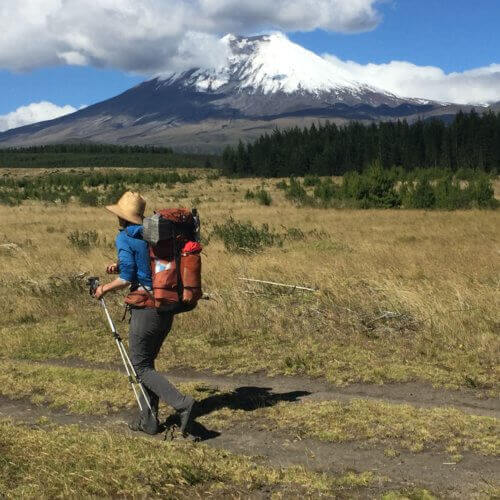
Foot Care for Endurance Athletes
“And forget not that the earth delights to feel your bare feet.” Khalil Gibran Of the 206 bones in your body, 52 are in your feet. Each and every one contributes to getting you to where you are going and is a potential major hindrance if not cared for. As a long distance, long term athlete, I spend a lot of time on my feet. Over the last 7 years I have hiked 12,000 miles, paddled 1,500 miles, and bikepacked 4,000 miles. With 3,500 miles left to complete a non-motorized traverse of the Americas, physical maintenance, and specifically foot care, is crucial. One of the important lessons I’ve learned has been moderation. It sounds silly putting those two thoughts into the same sentence but it is a fundamental truth to how I’ve been able to keep going for so long. Maintaining a pace and stride which works for me, resting when my body needs it, and giving it the resources it needs to stay healthy and moving are all examples of moderation and care which I began learning when I started thru-hiking over a decade ago. And which I continue to learn and relearn when my body makes her demands known or insists in the form of months of illness, repeated bouts of overuse injuries, or other physical break down. Interestingly, these sorts of issues don’t usually spring upon you all at once. There are signs, symptoms. That tweak in your lower back. Is that a one time thing or is that the beginnings of chronic pain? Every endurance athlete knows this fear and the fact is, you never can know which it is going to be. What you can do is incorporate a steady practice of care and strength building to give your body its best chance. Similarly, there are dozens of small things you can do to prevent going down that road, or to aid in recovery as you regain strength and stamina. These are a few of those small practices which can make a big difference Dry Your Feet I spent the first 3 years of my backpacking career battling with trench foot. I came to think it was simply part of the experience. I tried doubling up on socks, traded my way up into Gortex boots and the issue only worsened. When wearing shoes and socks, your feet are experiencing a very different climate than the rest of your body. Usually it is a warm, damp environment, just the sort of place fungus like to grow. I was super glueing deep cracks in my heel shut. Until finally one day I swung in the opposite direction and wore lighter shoes and began airing my feet out more often. I quit sleeping in socks and the issue subsided. If you go barefoot or wear open sandals, your feet will be able to dry naturally. Still, if you are on a multi-day trip, rinse or wipe your feet off at the end of the day, paying special attention to the areas between your toes. Not only will this keep your quilt or sleeping bag cleaner, but it will also keep your foot skin healthier. When you are in a closed shoes sort of environment giving your feet time to air out whenever possible. Whether that is under your desk at work, on a lunch break along the trail, or the drive home from the trailhead, keeping your feet clean and exposed to the open air contributes significantly to your foot health. Mix it Up Cross-training caught on in the endurance sport world over the past 20 years. All our muscle groups were made to work together so having one set particularly overdeveloped while others languish, doesn’t serve the sustained health of our physical systems in the long run. The same goes for our feet. While thru-hiking the CDT this past summer, I was retraining my feet after several months spent exclusively in my Xero sandals on sandy beaches and in a kayak. Due to constant high mile days, the weight on my back, and the terrain, I opted to hike in trail runners with more padding and zero drop and quickly began to have arch pain. Thus I began alternating between my sandals and trail runners throughout the day. Once the frosty mornings were past and when I took a breakfast break and aired out my feet, I would switch into my sandals for a few hours until lunch. At big river crossings, on smooth trail, and around camp, I was in my sandals. On thorny bushwhacks, across lava rock, and other rough environments, or at the end of the day when I was tired and not able to be as careful with my step, I would switch back into my trail runners. This switching back and forth made me very aware of my gait which is helpful because a hyper-extended gait is a leading cause of shin splints. While the cushion of the trail runners invited this sort of step, my Xeros reminded me not to fall into that. Thus, if like me, you aren’t ready to spend 100% of your time barefoot, there are still many ways and a lot of space for barefoot practices to improve your awareness of how you move, and your experience of both your body and the outdoors. Thank Your Feet Now, here I may get a bit hoakey for some folks, and I don’t mind if you skip on to the end, but at the end of a long and challenging day, I like to thank my feet. I leave my shoes at the vestibule, peel off my socks, and either soak my feet in a nearby stream or give them a good wipe down with a baby wipe. Then, sitting in the butterfly position or lying on my back in a modified happy baby pose, I wrap my hands around my feet and begin to stretch. Beginning just above my ankle bone I rub small circles and check in with all those tiny bones. With the texture of my skin. With the cracks in my skin. I thank them for the miles they have put in. Marvel at the ground they have covered and conditions they have weathered. Doing this I work my way all the way down the tops of my feet and then begin again at the ankles and cup my heel. In thru-hiking, that part of the foot takes a lot of heavy strikes and a lot of modern footwear encourages this, so they get an extra thank you for taking that extra whooping. Focusing on the soles of my feet and paying particular attention to both arches, I make my way to the toes. Stretching each toe individually and then tugging outward from the tip, pulling them long and a good final stretch before crawling into my sleeping bag and asking my body to do it all over again tomorrow. Endurance athletes ask a lot of our bodies but every thru-hike, ultra, or even just a junt around the block starts with one small step. The same measured moderation and care applies to foot care. Taking a few minutes out of your day or tacking a few extra on to your training routine may be hard to convince yourself of when you are trying to make miles or balance a busy lifestyle. Whether it is washing and airing out your feet, switching out shoes, or staying awake a few minutes longer in your tent to stretch your soles, small steps can make the biggest difference in the long run. After all, your feet are carrying the most weight on your body, giving them a few minutes of dedicated care is the least you can do. –Adventurer Bethany Hughes The content of this post does not constitute and is not intended to be a substitute for professional medical advice, diagnosis or treatment. Always seek the advice of a physician or other qualified health provider with any questions or concerns you may have about your health or a medical condition.
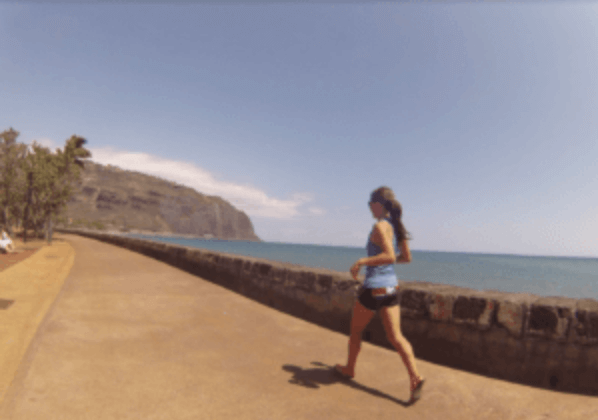
Tips to Transition to Minimalist Running
There is an overwhelming amount of information available in the world today on how to best make the switch from regular padded or “supportive” footwear to minimalist footwear. The Xero Shoes team themselves have accumulated an amazing amount of great information and other tips on making the transition, but as a couple of ultra-marathon runners who train and race (and actually spend most of our days every day) in minimalist footwear, we would like to share some of the things that helped us early on when we made the switch. Won’t be going into too much detail around the science and research side of it all, as we aren’t doctors or researchers ourselves, but lean on more of our purely experiential learnings from heavy training and recovery practices that we have. Transition Time This shouldn’t come as much of a surprise, as it’s talked about quite a bit surrounding the minimalist running topic. But we still want to reiterate it because it’s such a foundational part of transitioning to minimalist and really will be a key factor in your longevity in the practice. If you do just one thing from this entire article, do take your time during the transition, as no amount of stretching, rolling, supplements, or any other medical treatment will be able to PREVENT issues or injuries, the way building a solid foundation will. If you take the time to let the body adapt and strengthen the muscles, tendons and other tissues, you’ll save yourself a lot of setbacks down the road! Let us make one this very clear though, it’s not at all about the actual time (in days, weeks, months, etc.) it takes to transition, but more about the method of how you transition. The actual time to transition will depend on so many factors, so just focus on paying attention to your body and how it feels. When you feel like you’re ready to increase speeds or add volume then do so. Some people will adapt faster, some people are coming from different backgrounds, so just pay attention to your own journey and know that this is a long-term change and you will reap the benefits far into the future. One last tip we’ll include on this topic. If your goal is to transition to running in minimalist footwear, keep in mind that running is only a small portion of every day. Think about ways you can also spend time in minimalist footwear at work, around the house, while running errands. Between the Genesis sandals and the Hana shoes, there’s footwear for just about every style, so these are great ways to build that muscular stamina you’ll need in your lower legs. This is the second layer that is super important to also PREVENT injuries from popping up during this transition. Watch videos, find a coach, read articles, basically consume as much information you can about minimalist running (this is one great video on the topic here) so that way you’ll know what you need to work on, and what things aren’t worth worrying about. For example, during the early days of the minimalist movement, it was all about landing on your forefoot. As more research was done, it wasn’t so much about which part of the foot lands first, but more about where your foot lands in relation to your center of gravity (good article on this). There are also some coaches who hammer on technique drills to get your movement patterns dialed in. Whereas there are other coaches who feel that it’s pretty tough to change 20, 30 or 40 years of muscle memory, so it’s more valuable to focus on proper muscle development to work with your pre-wires movement patterns. Bottom line, there’s a lot of conflicting information out there, and there’s no one perfect answer, or method or training, or form to use. But don’t just wing it by slapping on some huarache sandals and going for a 40km (25 mile) run! Bottom of foot rolling Two of the issues we BOTH noticed came up for us while we were ramping up our mileage in minimalist footwear, was 1) a mild cramping on the bottom of the foot, and 2) a more intense pulling pain on the top of the foot. After lots of troubleshooting, it seemed like the root cause of both of these was tight calf muscles. By switching to a more mid/forefoot landing, our calves had to work harder. This cause the calves to tighten up. The calf muscles are connected to insertions on the bottom of the feet by the facia, which explained why we were feeling the tightness down below. And because the calves were tight, they were pulling on the bottom of the foot, which required the muscles that attach to the top of your foot to hang on a little tighter to keep the foot stable. It was literally like a tug-o-war match! The single most effective remedy to both of these was surprisingly enough rolling a ball under our feet (while standing). We found a lacrosse ball was the perfect size and density to give good pressure without making us scream. However, a golf ball is also a decent option that you might have around your house. There’s no textbook technique, but two quick pointers: i) Move slowly ii) do long rolls from the front to the back of your foot. Magnesium (both internally and externally) After some longer runs on the weekends or other hard training sessions, you’re bound to feel some tight muscles. When a lot of your muscles are tightening up, it’s sometimes good to take a broader approach and address and help all of your muscles. Magnesium is something that many of us are actually deficient in, and it’s one nutrient that actually aids in our muscle function of letting go and relaxing. Magnesium supplements can be taken orally to give your body (including your aching leg muscles) some calming help. You can also find different muscle rubs that are applied to the skin and allow magnesium absorption that way, so this can be done specifically on the calves or other leg muscles that might be feeling extra tight. Kinesiology tape This one we want to set a precaution for. In a similar fashion to the way we think about painkillers, and that is that they simply mask an issue and risk pushing your body to a severe point of damage. Kinesiology tape does help two relieve certain types of pain. They also don’t have any of the side effects that painkiller medication have. And it does have some great benefits for improved blood flow and other neurological functions. But the overall “masking” issue is still there. Applying kinesiology tape to a muscle or body part in order to avoid pain or help you push through it, risks causing a lot of damage to the muscle. Now that we’ve said this, we are both advocates of kinesiology tape when a situation calls for it. Best to talk with a physical therapist (and best to have them apply it too!) to see if it can benefit you. We’ve used it during races when a muscle tightens up on us and there simply isn’t enough time to sit down and roll it out or wait for magnesium to kick in. Or if we have a race coming up some leg pain pops up the day before. Sure we’ll roll it out and do what we can, but to make sure we’re good to go for that starting line, sometimes we’ll consider applying some kinesiology tape. Hopefully, one or more of these tips can help you in your transition to minimalist footwear. The journey is absolutely worth it, and your body will be much better built up for physical activity for a long time to come! –Mel & Jon The content of this post does not constitute and is not intended to be a substitute for professional medical advice, diagnosis or treatment. Always seek the advice of a physician or other qualified health provider with any questions or concerns you may have about your health or a medical condition.





